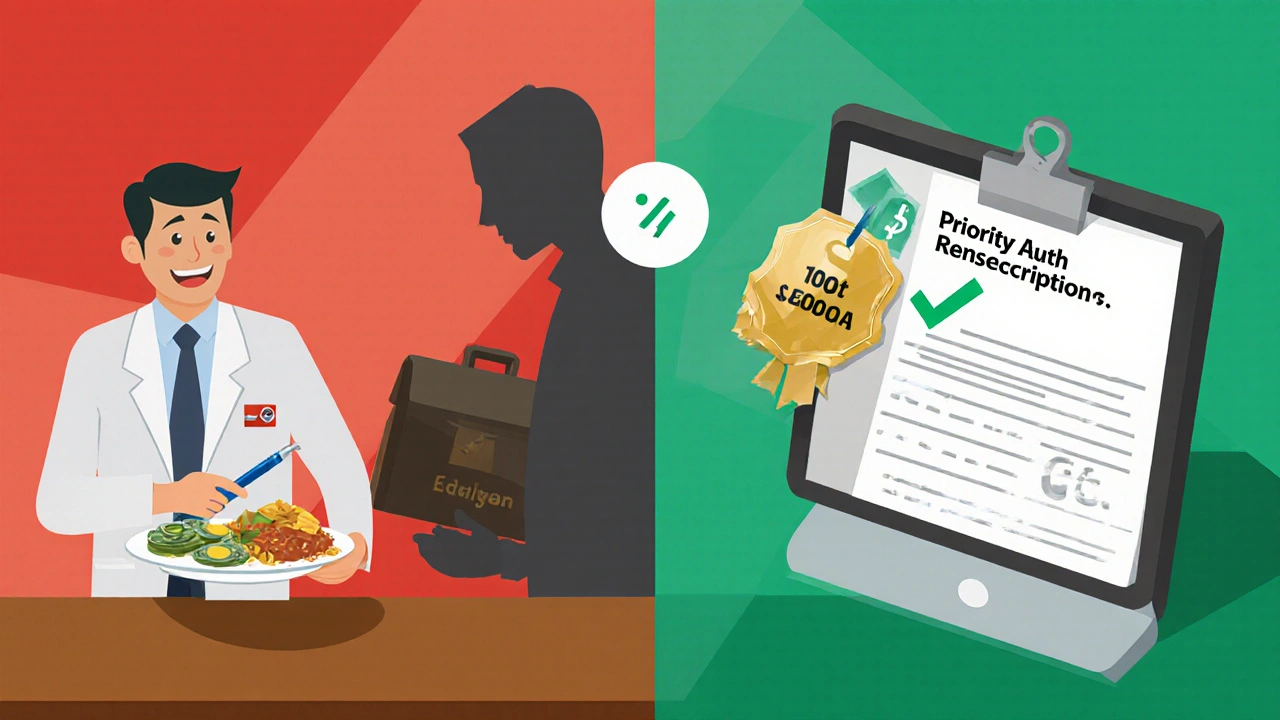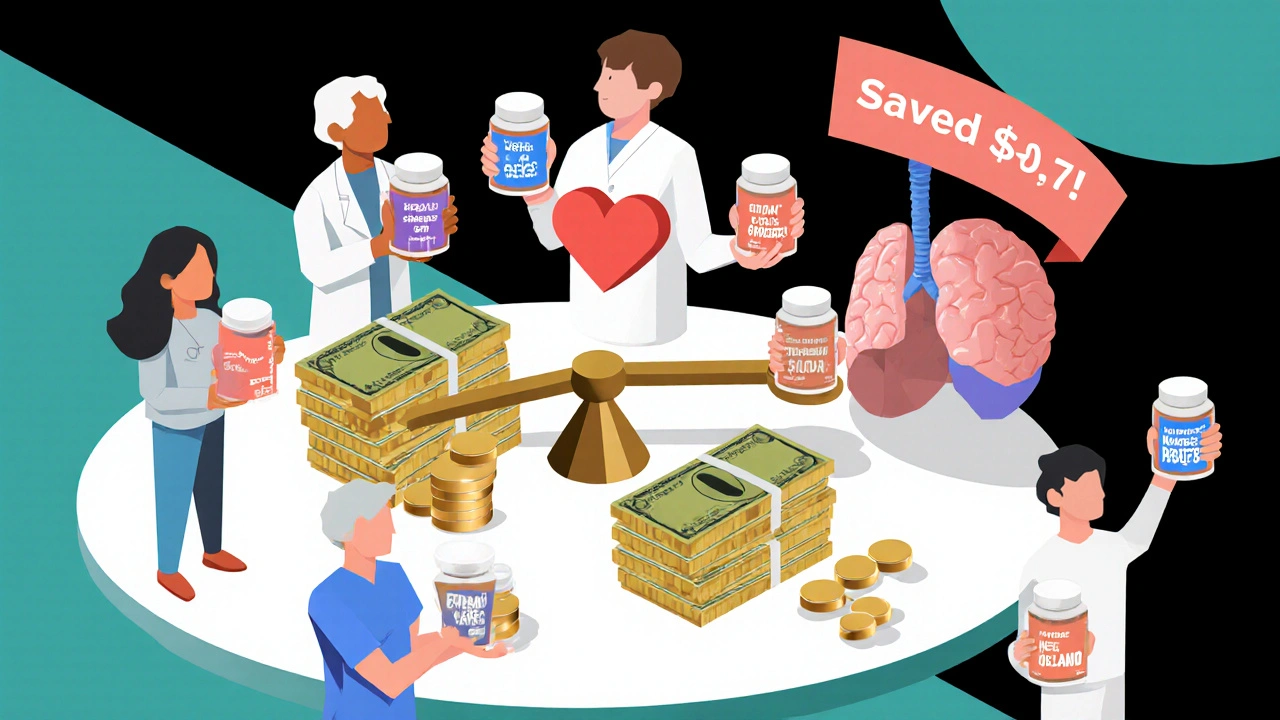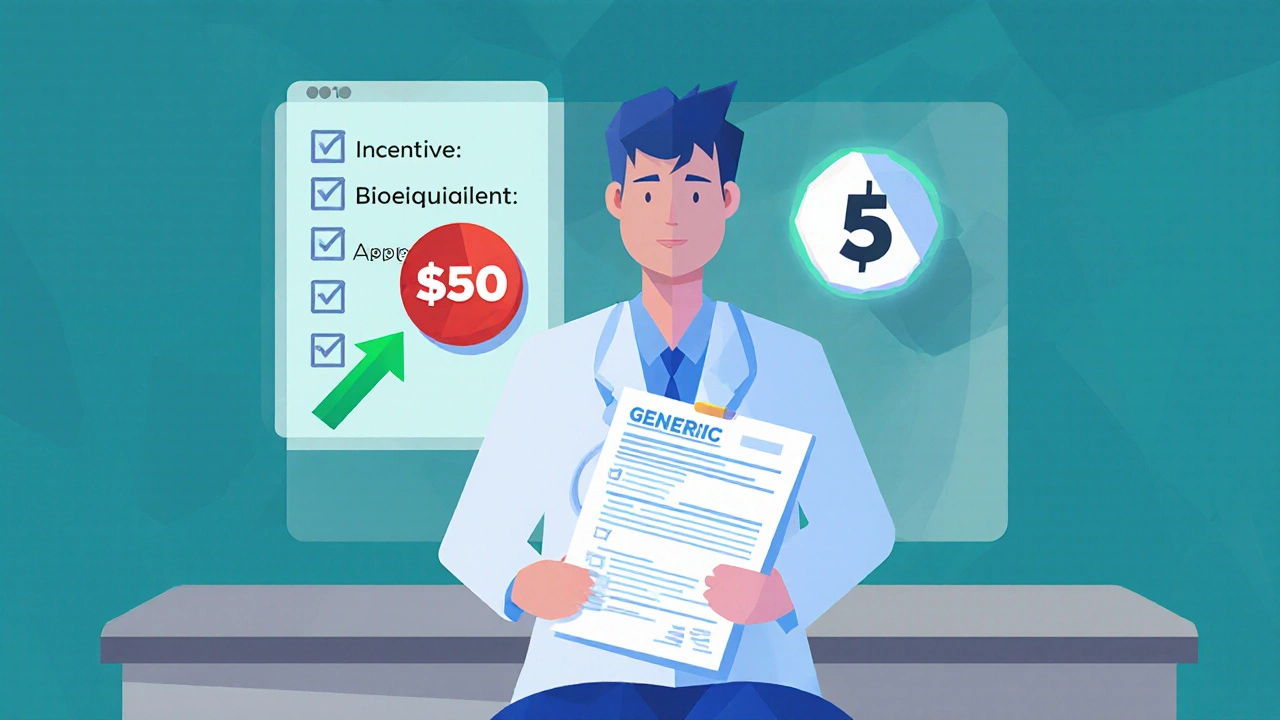When a doctor writes a prescription, they’re not just picking a medicine-they’re making a decision that affects your health, your wallet, and their own bottom line. For years, the default choice was often the brand-name drug, even when a cheaper, equally effective generic was available. But that’s changing. Today, generic prescribing incentives are quietly reshaping how doctors choose medications-and it’s not just about money.
Why Do Incentives Even Exist?
The U.S. spends over $253 billion a year on prescription drugs. Generic drugs make up 90% of all prescriptions filled, yet they account for only 23% of that total cost. That gap is huge. In 2019 alone, generics saved the healthcare system $1.7 trillion over the previous decade. So why aren’t all doctors prescribing them by default? The answer isn’t simple. Some doctors still default to brand names out of habit, lack of awareness, or because they’ve been influenced by pharmaceutical reps. Others worry that switching a patient to a generic might cause confusion or side effects-even though the FDA requires generics to be bioequivalent. That’s where incentives come in. They’re not meant to force doctors’ hands. They’re meant to nudge them toward choices that save money without sacrificing care.How Do These Incentives Actually Work?
There are two main types: financial and non-financial. Financial ones are straightforward. Some health plans pay doctors $5 to $15 per generic prescription in targeted drug classes. Blue Cross Blue Shield plans, for example, have offered annual bonuses up to $5,000 per provider. UnitedHealthcare’s Value-Based Prescribing Program pays physicians based on how often they choose generics over brand-name drugs in primary care settings. One internal medicine doctor in California reported adding $2,800 to his annual income just by sticking to generics where appropriate. But money isn’t the only tool. Non-financial rewards matter too. Some insurers give doctors faster prior authorization approvals if they consistently prescribe generics. Others offer priority scheduling or public recognition on provider dashboards. In some cases, electronic health records (EHRs) are programmed to suggest generics first-making the right choice the easiest one. A 2020 study found that simply setting generics as the default option in e-prescribing systems boosted their use by over 22 percentage points.What’s the Impact?
The results are clear: when incentives are well-designed, prescribing changes. Programs that directly reward providers increase generic use by 24.7% in primary care. Compare that to formulary tiering-where patients pay less for generics but doctors get no direct reward-which only moves the needle by 8-12%. That’s a big difference. Medicare’s $2 Drug List pilot, which capped co-pays for essential generics, led to a 17.3% rise in adherence among seniors. And in Germany, where the government sets a single reimbursement price for all drugs in a therapeutic class, 93% of off-patent prescriptions are generic. The U.S. hovers around 85%. The lesson? When the system rewards the right behavior, doctors follow.
But It’s Not All Smooth Sailing
Not every doctor is on board. Some say these programs feel coercive. One family physician in Texas told Medscape that when incentives come with strict targets, it starts to feel like they’re being told what to do-even when a patient’s condition is complex. Reddit threads from doctors echo this: “Generic incentives work fine for high blood pressure or diabetes,” wrote one user, “but what if the patient has three chronic conditions and reacts differently to every generic formulation?” There’s also a darker side. A 2023 JAMA study found that doctors who participate in the 340B drug discount program-which gives safety-net providers deep discounts on brand-name drugs-actually prescribed fewer generics. Why? Because they make more money when they use those discounted brands. That’s a perverse incentive: the system rewards them for spending more, not less. Even more troubling? Pharmaceutical companies still find ways to influence prescribing. A 2022 report showed that 40-50% of physicians consider free meals, branded pens, or sponsored educational events acceptable. Some reps visit doctors multiple times a week, building relationships that subtly sway choices. That’s why doctors who receive any kind of compensation from drug makers are 37% less likely to always prescribe generics, especially for new ones.What Do Doctors Really Think?
Surveys show mixed feelings. A 2021 MGMA study of 1,200 providers found 63% liked financial incentives-as long as they were voluntary and tied to quality metrics, not just cost-cutting. But 78% worried that if patients found out their doctor was being paid to prescribe generics, it could damage trust. That’s a real concern. Patients don’t want to feel like their care is being driven by a bonus check. The most successful programs avoid that trap. They focus on transparency, education, and clinical flexibility. The American College of Physicians recommends excluding drugs where brand formulations are medically necessary-like certain seizure medications or thyroid drugs where small differences in absorption matter. They also stress that incentives should be part of broader quality improvement, not standalone cost targets.
What’s Next?
The trend is moving toward smarter systems. UnitedHealthcare’s 2024 rollout of “value-based prescribing contracts” will tie payments to both cost savings and patient outcomes. CMS is expanding its model of standardized co-pays for essential generics across Medicare Advantage plans, with early results showing a 22.7% improvement in adherence for chronic conditions. The Inflation Reduction Act’s patent reforms could push generic use up another 5-7% by 2027. But the real challenge isn’t technology or policy-it’s trust. Doctors need to feel like they’re being supported, not surveilled. Patients need to know their care isn’t being compromised. The best incentive programs don’t just reward prescribing; they empower decision-making. They give doctors the tools, the data, and the freedom to choose what’s best-not what’s cheapest.What Makes a Good Incentive Program?
Not all programs are created equal. Here’s what works:- Transparency: Doctors know exactly how the bonus works and what drugs qualify.
- Flexibility: Exemptions exist for cases where brand drugs are clinically necessary.
- Integration: Incentives are built into the EHR, not added as an extra step.
- Education: Providers get training on therapeutic equivalence and when to avoid switching.
- Voluntary: No penalties for non-participation. It’s a reward, not a mandate.
Bottom Line
Generic prescribing incentives aren’t about forcing doctors to cut corners. They’re about aligning the system with what’s already true: generics are safe, effective, and cheaper. Done right, they save billions without sacrificing care. Done wrong, they erode trust and create unintended consequences. The goal isn’t to make doctors prescribe more generics. It’s to make them feel confident prescribing the right one-every time.Do generic drugs work as well as brand-name drugs?
Yes. The FDA requires generic drugs to have the same active ingredient, strength, dosage form, and route of administration as the brand-name version. They must also meet the same strict standards for purity, stability, and bioequivalence. Studies consistently show no meaningful difference in effectiveness or safety for the vast majority of medications.
Can financial incentives make doctors prescribe the wrong drug?
They can-if the incentives are poorly designed. If a program pushes doctors to prescribe generics without allowing exceptions for complex cases, it risks therapeutic substitution errors. For example, switching a patient from a brand-name seizure medication to a generic with slightly different absorption could trigger breakthrough seizures. Good programs include clinical exemptions and decision support to prevent this.
Why do some doctors resist generic prescribing incentives?
Many worry about losing clinical autonomy. Others have seen cases where a patient reacted poorly to a generic, even if it was technically equivalent. Some feel pressured by payers who treat prescribing patterns like a quota. And a significant number are influenced by pharmaceutical marketing-free meals, sponsored events, or even equipment donations that create subconscious loyalty to brand names.
Are generic prescribing incentives common in the U.S.?
Yes. As of 2023, 89% of U.S. health plans include some form of provider incentive for generic prescribing. Large hospital systems and Medicare Advantage plans are nearly universal in their adoption. The trend is growing, especially as payers move from simple tiered formularies to value-based contracts that tie payments to both cost and outcomes.
Do patients know if their doctor is being paid to prescribe generics?
Usually not. Most programs don’t disclose payments to patients, and many providers avoid mentioning them to prevent mistrust. However, transparency is a growing concern. Some experts argue that if incentives are ethical and well-designed, patients should be informed. Others warn that disclosure could lead patients to question every prescription, even when the choice is clinically sound.
What’s the biggest mistake in designing these programs?
Treating all drugs the same. A one-size-fits-all approach ignores that some medications have narrow therapeutic windows-small differences in formulation can matter. Programs that don’t allow clinical exemptions for these cases risk patient harm. The best programs use EHR alerts to suggest generics only when appropriate, and let doctors override them with a click when needed.


Laurie Sala
So let me get this right: doctors get paid to prescribe generics… but if a patient has a weird reaction, it’s their fault? And we’re supposed to trust this system when pharma reps are still handing out free coffee and branded pens like it’s 1998? I mean-really?!!